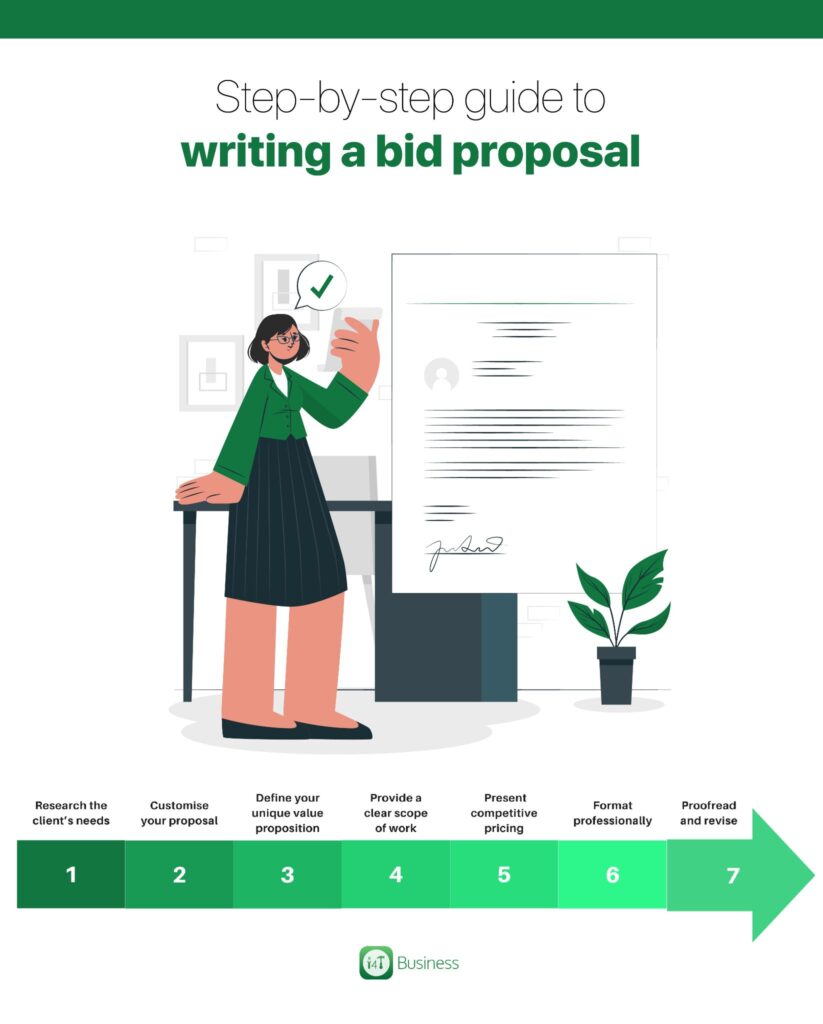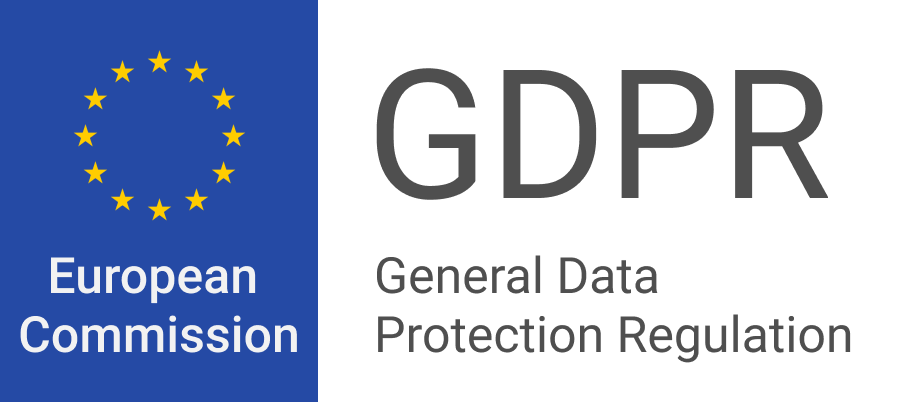Have you ever made a bid proposal? Then, you might probably have felt like walking a tightrope; one misstep, and you might lose the job to your competition. As you already know, a bid proposal is more than just a document; it’s your pitch, your handshake, and your first impression all in one. If it is done right, it can seal the deal and land you that coveted contract.
But let’s be real, writing a compelling bid that seals the deal isn’t always easy. You would have to face various challenges when preparing a bid proposal. For instance, estimating the costs accurately and aligning them with the expectations of the client can be quite overwhelming.
Don’t worry, in this blog post, we’ll break it all down for you. Whether you’re using quoting software for electricians or managing bids with Jobs Management Software, this step-by-step guide will show you how to create a proposal that stands out and wins contracts. Let’s dive in!
What is a bid proposal?
When you’re running a field service business, a solid bid proposal helps you to win contracts and stand out in a competitive market.
What is a bid proposal? Basically, it’s your pitch to a client.
It’s a document that explains what you’re offering, how you’ll get the job done, and how much it’ll cost. Think of it as your chance to show that you’re reliable, professional, and capable of delivering what the client needs. Let’s take a look at some of the reasons why taking the time to craft a solid bid proposal matters:
- It shows you’re serious: A well-organised proposal tells clients you’re not just winging it. It shows you’ve taken the time to understand their needs.
- It builds trust: When you include all the details like timelines, costs, and how you’ll tackle the project, it reassures the client that there won’t be surprises down the road.
- It helps you stand out: Clients often compare multiple proposals. Therefore, a clear and professional one can set you apart from others who may not put in the same effort.
What are the different types of bid proposals
Not all proposals look the same. Depending on the job, you might need to adjust your approach. Here are the main types you’ll come across:
Formal tenders
These are for bigger projects, like government contracts or large commercial jobs. They usually require a lot of detail, including technical specifications and compliance documents.
So, when preparing a formal tender document, read the client’s instructions and requirements carefully. Missing even one requirement could get your bid thrown out. You can use tools like jobs management software to stay organised and keep track of everything.
Informal quotes
Informal quotes are common for smaller jobs or clients who just need a quick price. These are simpler and usually include just the basics like costs, services offered, and timelines.
Even though it’s informal, don’t skimp on details, because a clear and easy-to-read quote will still make a good impression. You can try using quoting software for electricians to create polished, accurate quotes in no time.
Online submissions
With everything going digital these days, many clients now prefer online bids through email or other online platforms. These need to be concise and formatted properly.
Therefore, make sure your proposal looks good on a screen, and there are no messy layouts or hard-to-read text. You can save your proposals as PDFs or use templates that work well online.
Check out our free Proposal Template, to start winning more jobs today!
Don't wait for days or, worse, weeks to send your invoice. The quicker your client gets it, the faster you'll get paid.
What are the key components of a winning bid proposal?
Writing a bid proposal doesn’t have to be complicated, but it does need to be clear, thoughtful, and tailored to the client. Each section of your proposal has a unique purpose, such as introducing your business, addressing the client’s needs, and convincing them that you’re the best person for the job. Let’s take a closer look at the key parts of a winning bid proposal and what you need to include to make it perfect.
Executive summary
The executive summary is like your proposal’s handshake because it’s the first thing your client will see. So, it needs to grab their attention right away.
- What it is: A short introduction to your business and why you’re the right fit for the job.
- What to say: Briefly explain who you are, what you specialise in, and what makes you stand out. For example, mention your experience in similar projects or how you use tools like Jobs Management Software to ensure everything runs smoothly.
- Why it matters: Clients often skim proposals, so this section needs to show them right away that you understand their needs and can deliver.
Client’s need analysis
This is where you show the client you’ve done your homework. Understanding their challenges or goals is key to building trust.
- What it is: A section that highlights what the client needs and how you’ll help solve their problems.
- What to say: Be specific about their situation. For example, if the client needs a fast turnaround on an electrical project, acknowledge that and explain how your team can meet their timeline without sacrificing quality.
- Why it matters: A generic proposal won’t cut it. Showing you’ve taken the time to understand their unique situation makes them feel valued.
Proposed solution
Here’s where you lay out your game plan. Think of it as explaining your approach to someone who isn’t an expert in your field.
- What it is: A clear explanation of how you’ll complete the job, including your methods, timeline, and what the client will get at the end.
- What to say: Use simple language to explain your plan step by step. For example, “First, we’ll conduct a site assessment to identify any potential challenges. Then, we’ll create a detailed project schedule to keep everything on track.”
- Why it matters: Clients want to feel confident that you know what you’re doing. A clear, organised solution helps them picture the process and trust you to deliver perfect results.
Pricing and cost breakdown
Talking about money can be tricky, but transparency here is essential. So, make sure to be precise and transparent about your prices and calculations.
- What it is: Give a detailed breakdown of your costs so the client knows exactly what they’re paying for.
- What to say: Be upfront about materials, labour, and any additional expenses. For example, “The total cost includes high-quality materials that meet safety standards, as well as labour costs based on the scope of the project.”
- Why it matters: Nobody likes hidden fees. Therefore, being clear about your prices from the beginning will help to build trust and avoid misunderstandings later.
Qualifications and experience
This is your chance to show off what makes you the best choice without sounding overly formal or braggy.
- What it is: A section that highlights your skills, certifications, and past successes.
- What to say: Focus on what’s relevant to the job. For example, if you’ve completed similar projects, share the details. Include any certifications or client testimonials that reinforce your expertise.
- Why it matters: Clients want to know they’re hiring someone they can trust. Showing them your experience proves you’re up to the task.
Terms and conditions
This part might not seem exciting, but it’s one of the most important sections to avoid headaches down the line.
- What it is: A clear outline of the rules and expectations for the project.
- What to say: Cover payment terms, deadlines, and warranties in simple, straightforward language. For example, “We require a 20% deposit upfront, with the remaining balance due upon project completion.”
- Why it matters: Setting expectations upfront prevents misunderstandings and ensures everyone is on the same page.
Call to action (CTA)
Don’t leave the client wondering what to do next – give them a clear step to follow.
- What it is: A closing statement that encourages the client to move forward with you.
- What to say: Be friendly and direct, like, “Let us know if you’re ready to move forward, and we’ll schedule a call to finalise the details!”
- Why it matters: A strong CTA makes it easy for the client to take the next step, keeping the momentum going.
Step-by-step guide to writing a bid proposal

Writing a bid proposal can be quite challenging, but it doesn’t have to be complicated. The goal is simple.
A proposal should be able to show your client you understand what they need and explain how you’ll deliver it better than anyone else.
By breaking it into manageable steps, you can create a clear and professional proposal that speaks directly to your client. Let’s go step by step so you can get it right.
Step 1: Research the client’s needs
Before you start writing, take some time to understand what your client wants. You should look into their goals and challenges and identify what they expect from the project.
A proposal that shows that the contractor knows what the client needs will help to show that you’re serious about their business.
Step 2: Customise your proposal
As you already know, no two clients are the same. So, your proposals shouldn’t be either. Make sure to tailor your proposal to reflect the specific requirements of your client.
You should mention the details of their job request and explain how your services align with their needs. Make sure to avoid generic templates because they won’t impress anyone.
Further, a customised proposal will help your business stand out from the competition. Because clients want to feel like you’re speaking directly to them and not just sending the same document to everyone.
Step 3: Define your unique value proposition
You should specify what makes you the best choice for the job. Therefore, highlight what you bring to the table that others don’t. For instance, maybe you have years of experience in similar jobs, or you use tools like Quoting Software For Electricians that will help to create an accurate estimate.
Clients often compare multiple bids. So, this is your chance to explain why you’re worth their trust and their money.
Step 4: Provide a clear scope of work
Clients need to know exactly what they’re paying for and what to expect. Therefore, outline the steps you’ll take to complete the project, along with timelines and deliverables.
For example, you can set clear timelines like, “Day 1: On-site inspection; Day 2-3: Materials and site preparation; Day 4-7: Installation.”
A clear plan reassures the client that you’re organised and capable of delivering the project without surprises.
Step 5: Present competitive pricing
Price matters, but how you explain it matters even more. Make sure to break down your pricing into simple categories like labour, materials, and overhead. It has to be accurate and transparent. Justify your costs by showing the value you provide, such as high-quality materials or expert craftsmanship.
It helps to build trust with clients because when they see where their money is going, they will feel more confident choosing you.
Step 6: Format professionally
A good proposal isn’t just about what’s in it—it’s also about how it looks. Make sure to use headings, bullet points, and white space to make your proposal easy to read. You can add simple visuals like charts or images if they help explain your points.
A clean, easy-to-read format makes a great impression and ensures the client doesn’t miss any important details.
Step 7: Proofread and revise
Little mistakes can leave a bad impression, so don’t skip this step. Double-check your proposal for any typos, grammar issues, and errors in your numbers. Read it out loud to catch anything that sounds off or unclear.
A polished proposal shows how professional you are and how much attention you give to detail. These are the qualities every client looks for.
What common mistakes to avoid when making a bid proposal
Even the best bid proposals can fall out if they have errors. Let’s go through some of the most common mistakes field service business owners make when making a bid proposal and how you can avoid them.
Generic proposals
Sending the same proposal to every client might save you time, but it won’t help you stand out from the competition.
If you use a one-size-fits-all proposal, it makes you look like you are not invested in the client’s project. Clients want to feel like you’ve taken the time to understand their specific needs.
Therefore, tailor your proposal to each client. Include the goals and expectations of the client, their challenges, and project specifics. For example, if you’re bidding on a residential wiring job, highlight your experience with similar projects and how you can meet their deadlines or budget.
Lack of clarity
Suppose your proposal is too vague about pricing, timelines, or deliverables. In that case, clients are likely to move on to someone else who’s more transparent.
If you are not transparent about your proposal, it can confuse the clients, which will lead to disagreements later. For instance, if you don’t clearly outline what’s included in your pricing, the client might assume something is covered when it’s not.
Therefore, be as detailed as possible. Break down your pricing into categories like materials, labour, and overhead. Clearly explain timelines, such as when each phase of the project will be completed. You can use bullet points or tables so that everything is easy to understand.
Overloading with information
While you want to be thorough, bombarding the client with too much information can backfire too. A proposal that’s packed with unnecessary details or technical jargon can be difficult to understand.
That’s why you should keep your proposal focused on the client’s priorities. Stick to the essentials: what you’ll do, how you’ll do it, and why you’re the best choice. Save additional details for discussions after they’ve shown interest.
Ignoring deadlines
Submitting your proposal late or even at the last minute will send the wrong message about your reliability. It makes you look unorganised and unprofessional. Further, late submissions might even disqualify your proposal right away.
Therefore, you should plan, mark deadlines on your calendar, and aim to submit your proposal a few days early. This gives you time to make any last-minute tweaks without stressing over the deadlines.
How to present your bid proposal effectively
The way you showcase your proposal can break or seal the deal. That’s why a great bid proposal should also be presented in a way that grabs the client’s attention and keeps them interested. Here are some simple but effective tips to help you present your bid like a professional.
Visual enhancements
Plain text can be boring, especially if the client has several proposals to review. Make sure to add visual elements to make your bid more engaging and easier to understand. You can include charts to break down your prices, timelines to show project milestones, and visuals that illustrate your work process.
For example, a clean, easy-to-follow timeline can help the client picture how their project will progress.
Visuals not only make your proposal look professional, but they also help clients quickly grasp key details without reading every word. It’s about making their decision process easier.
Personalised communication
A one-size-fits-all approach doesn’t work when it comes to presenting your bid. Personalised communication helps you connect with the client on a more human level. Therefore, make sure to write a tailored cover letter that addresses the goals of the client and their concerns. Mention specifics from their project request and show that you’ve paid attention.
For example, mentioning things like “we understand your priority is completing this project within two weeks while staying under budget, and our proposal is designed to meet those goals” can go a long way in sealing the deal.
As you already know, personalising the bid proposals will show that you’re genuinely interested in their business and not just sending out generic bids. It helps to build trust and demonstrate that you’re focused on their needs.
Follow up strategically
Submitting your proposal is only part of the process. You should do the necessary follow-ups, too, because it shows your professionalism and keeps the communication open. Reach out to the client a day or two after submitting your bid and confirm they’ve received it. At this point, you can offer to answer any questions and provide additional details if they need any.
A follow-up reminds the client that you’re available and committed to working with them. It also gives you a chance to address any doubts they might have before they make a decision.
Are you ready to write your next job-winning bid proposal?
Writing a great bid proposal is not just for landing a contract. It’s also about showing your clients that you understand their needs and are the right person for the job. A clear and well-structured proposal can help you stand out from the competition and build trust from the beginning.
The good news? You don’t have to start from scratch every time. You can use a free template, which will save you hours of work and ensure that your proposals are clear and professional. Templates give you a solid structure to follow, so you can focus on personalising the details and crafting a pitch that truly speaks to the needs of your client.
To make things even easier, tools like i4T Business can take your proposal game to the next level. From tracking project details to organising costs, job management software helps you stay on top of everything while creating impressive proposals in no time.
Now’s the perfect time to get started. Grab a template, use the right tools, and start crafting proposals that win contracts and grow your business. Your next big job is just a well-written proposal away!
FAQs
Yes, include relevant references or testimonials to build trust and showcase your past successful projects
Use a template for structure, but always tailor the content to the specific client and project.
Be responsive and provide clear answers. Address questions in your proposal if they’re commonly asked.
Send your proposal via email as a PDF to ensure it’s professional and easy to access.
Yes, offering optional add-ons shows that you are flexible and may encourage upselling if the client has an extra budget.
Hot off the press!

Field Service Management sector operates, the i4TGlobal Team loves to share industry insights to help streamline your business processes and generate new leads. We are driven by innovation and are passionate about delivering solutions that are transparent, compliant, efficient and safe for all stakeholders and across all touch points.










